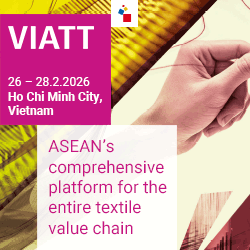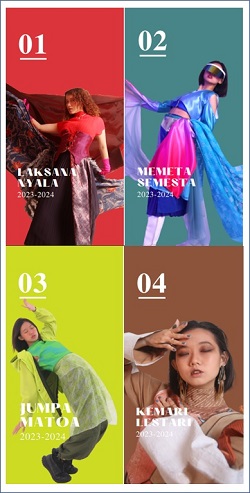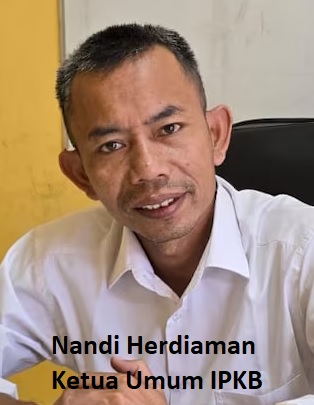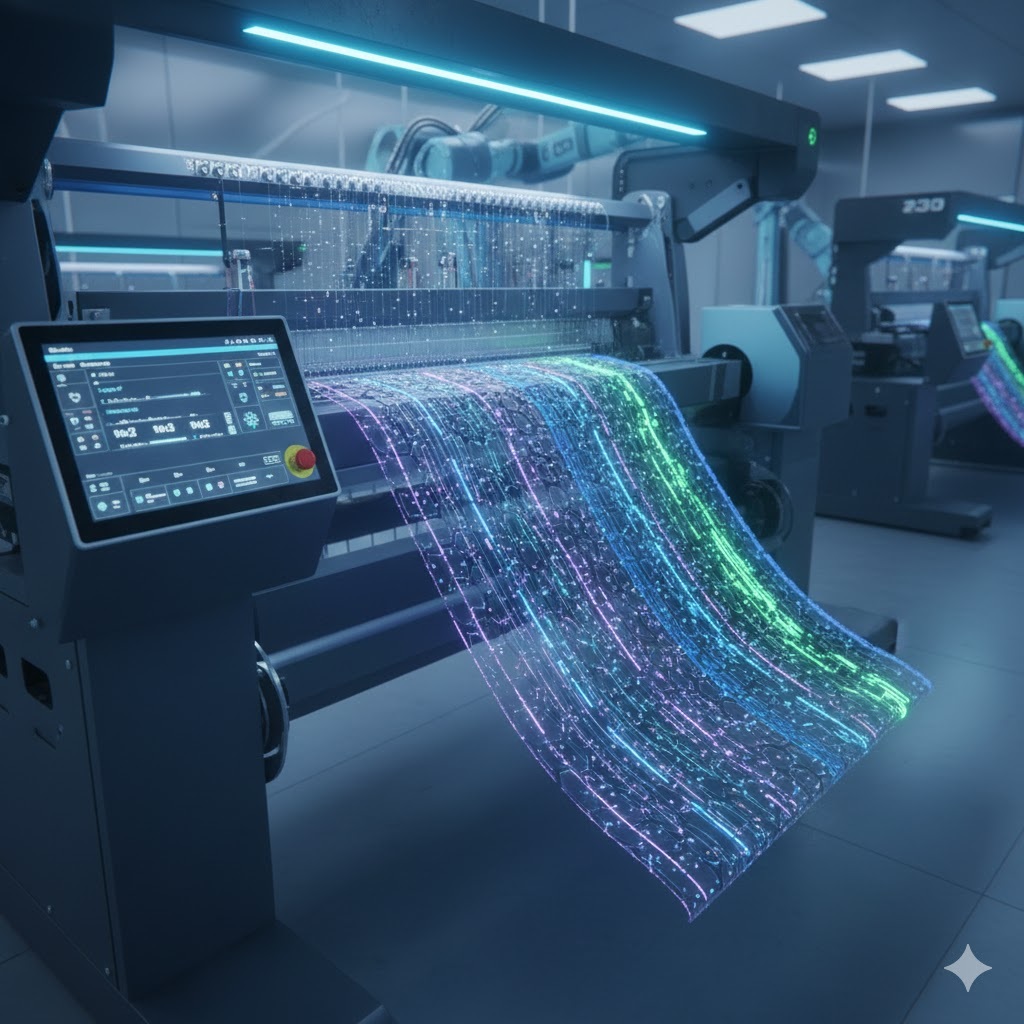Until now, the textile industry and textile products are still the government's mainstay in absorbing labor, meeting domestic needs and generating foreign exchange. However, in the last 10 years this sector seems to have been neglected until it has experienced stagnation in growth and a downward trend in net foreign exchange where export growth averages only about 2% while import growth reaches 9%, this sector seems to have been held hostage by import activities.
In the midst of the COVID-19 condition, the movement has actually been felt in the third semester of 2020. However, the revival did not last long. At the end of the first quarter of 2021, the textile industry actually experienced great pressure because the volume of imports of apparel soared sharply in the domestic market.
Redma Gita Wiraswasta believes that state support is a solution to revive the domestic textile industry. The Secretary General of the Indonesian Filament Yarn and Fiber Producers Association (APSyFI) assessed that government support does not have to be in the form of incentives or stimulus. Import control and equal treatment between imported and domestic products are seen as the best solution for the industry as a way to naturally encourage investment. Here's a snippet of the interview:
How is the business condition in the textile sector during the Covid-19 pandemic?
We are in the upstream sector of textiles because we make fiber and filament yarn. The condition is almost the same with the textile sector. So last year, in the second quarter of 2020, when Covid started, some of them stopped production and some even laid off their employees. Utilization is only 30%. Local sales are difficult, export sales are also difficult. Starting in the next quarter, the PSBB will begin to be relaxed and that will increase utilization by around 50% because it is driven by the domestic market.
Meanwhile, exports have not been significant in the sense that there are but still very few. So the dominance of the domestic market is due to the opening of economic activities, right? Then, in the fourth quarter of 2020, it got even better, around 70% of production and export utilities began to exist little by little.
Then the local market is also given incentives to consumers to shop. From there it was pretty good for us because from the domestic market and also at that time there were not many imported goods. So, at the end of last year, the market condition existed even though it was not as normal as 2018 and 2019.
In the first quarter of 2021, it was only good in the first two months and after that, imported goods began to enter. So when we enter March, when imports rise again, the stock of production goods has piled up because imported goods have filled the local market.
There are a lot of imported goods coming in from e-commerce. Indeed, this effect does not directly affect us because what is in e-commerce is finished goods, but upstream it will have an effect because the demand for fabric and fiber has fallen. So during the first quarter of 2021, only the last month had an effect on textile growth which fell 13%. in the first month and the second month it started well but in the third month it started to be quiet again.
Textile business actors in fabrics and garments have held back the purchase of raw materials. Finally, the stock is still a lot and it's still happening to this day. So this situation occurs because there are imported goods. Actually, the domestic market exists and purchasing power exists, although it is not yet normal. The only problem is that when purchasing power is not normal, this 'cake' is added a little, before imported goods there are small 'cakes' that we can use and eat together at local businesses. When a lot of imported goods come in, the locals have stepped aside again. So these imported goods are mainly in finished goods in garments, apparel and enter through the online/e-commerce Bonded Logistics Center. Then there are still imports of cloth through wholesale imports. So these textiles are under attack from many kinds so that our industry has not been able to recover yet.
So the main challenge comes from importing raw materials and finished goods?
Yes, that's right, if you want to talk about the main challenges in the past 2 years, the raw materials for fabric and yarn. But if now it's the finished material. So everything is brushed with them. We see that the most difficult challenge to face is when there is an import of finished goods. This has an impact on small and medium-sized industries, which are currently not actively producing.
How will the government respond?
Well, yesterday, Mr. Minister of Cooperatives and SMEs, Mr. Teten, some have been stopped from importing finished goods through e-commerce. But that's what the stall stopped. But now there are many online stalls owned by local people but all of the goods are imported. That's still going on.
Has the association made input to the government regarding this situation?
We at the association have conveyed that since 2019, imports of apparel goods have had an upward trend and continue to rise. In fact, we have proposed a garment product safeguard for the protection of apparel but so far it has not been implemented. From the data from the Indonesian Trade Security Committee, it has been seen that there has been a surge in imports of apparel and this has put pressure on domestic producers. This has been discussed at the Ministry of Commerce. Now he lives in the finance minister.
We have received information from the trade minister, and have submitted a recommendation to the finance minister so that the import of apparel is subject to security duties or safeguards. So we are waiting for that now. We have also proposed that the government implement an import approval (PI). So, an import quota for garments is made, so PI documents are required as applies to the shoe manufacturing industry. But that hasn't been approved yet. One more thing we want to fix is on bulk imports, which are still a lot. Because of this wholesale import, the mode is under invoice, under volume, under price and there is also a runaway HS that is also there. HS flight and transhipment, for example, there is a case in Batam, it's transshipment. It started a lot again.
Regarding fiscal policy, such as tax and customs incentives, what is your view?
Incentives in the customs sector are actually incentives for imported goods. That's a problem. The government may make an incentive argument for raw materials and so on, that's okay for us. But it is necessary to look at the supply of raw materials in the business sector like ours, there are already many.If you want to look at the capacity of domestic fabric producers, it's actually already over supply. However, customs incentives for imports are still provided, such as being free from import duties and VAT, which are actually enjoyed by importers.
Instead, it becomes a backfire for us as domestic producers. So we feel that the incentives given are always pro for imported goods. Then when some time ago there was a problem related to PPE, masks and others, import duties and taxes were exempted. In fact, there are many domestic producers, so why the incentive for imported goods. Meanwhile, exports were closed but imported goods were opened and facilities were given. So it's always the other way around and this is what we're always protesting. The second point regarding taxes is that there is actually a tax allowance and tax holiday, but the two incentives will not be effective because investment is minimal.
Minimal investment because the market does not exist. So the existing companies selling locally are difficult because the market is flooded with imported goods. Then, if the company wants to be export-oriented, it needs high competitiveness. That's even more difficult. We have competitiveness, but we are barely able to compete in the export market. So it can be seen in the export of textiles and textile products (TPT) from year to year, just like that. For our exports there are also challenges with a high dependence on imports of raw materials. If such conditions are difficult for exports and the domestic market is filled with imported goods, we have no room to develop. Yes, people will not want to invest if the conditions are like that.
When we can maintain this domestic market, the tax allowance and tax holiday incentives will become sweets that attract investment. From a fiscal perspective, we judge that the right incentives are those that are able to reduce production costs. For example, we ask KLTE for local convenience for export purposes. We have proposed this to the Ministry of Finance, this is not actually an incentive. We ask for equal treatment between local goods and imported goods. So right now there is a KITE facility that imports do not have to pay import duties and VAT from the origin of the production for export. Well, if the company is export-oriented but uses materials from within the country, it will still be subject to VAT.
It is true that goods exported under VAT can be refunded, but the process takes less than 6 months, which is great. On the other hand, for imports, you do not have to pay the tax burden. So people will prefer imported raw materials rather than local raw materials. For that, we propose the same thing when entrepreneurs buy from local producers. So there is equal treatment and from that it also reduces the working capital which is 10%, you don't have to pay. That alone is difficult to propose even though we only ask for equal treatment.
There are other incentives for R&D and vocational activities whose designs are actually quite attractive. But because of the current conditions, I see not many people are using it for the textile sector from the upstream and downstream sides. What is even more beneficial is the reduction in gas prices from US$9.8 per million british thermal unit (MMBTU) to now more than US$6 MMBTU. That's good enough for us even though it's still not as competitive as China and India for gas prices. So the tax incentives will be very felt for us if it is effective in reducing operational costs and incentives that relax the company's cash flow costs. So if restitution is easier and faster, the entrepreneur will be more relaxed in terms of cash flow.
How about policies related to Taxation and Customs?
This is what causes a lot of problems with the bumper. So previously, for used imported goods, the tax was not used at the time of sale to the market. For example, he uses production using imported logs and the convection company buys the goods without using a tax invoice. Meanwhile, those who use domestic production must use a tax invoice. Many of the companies use simple tax invoices and the VAT is paid. Furthermore, the buyer from this convection does not want to receive a tax invoice. So it is considered a violation in the administration of VAT even though the tax has been paid in the end many are processed. Many have to re-pay VAT and some are subject to administrative sanctions. But for the imported goods, none of them were checked because the system was indeed a broken sale. The importer does not know who the buyer of the goods is. This will not be equal from a tax perspective. This is actually the government's homework.
For the customs, now there are more wholesale imports like that, high-risk goods. Hopefully, we can take firm action on it soon. We see that improvements must also be made by traders who are in the green line category. It needs to be seen again whether the imports carried out are in accordance with the PIB and masterbatches in China. Because the data on exports and imports of textiles between China and Indonesia are different. Chinese data says exports to Indonesia are almost US$1 billion higher than our import records from China for HS 50 to HS 63. The difference is consistent every year the data is not far from the figure of US $ 1 billion. This means that there are goods from China worth US $ 1 billion that are not listed here. In China, it seems impossible to falsify export documents because it will be related to VAT refunds and export rebates from the Chinese government. If he reduces the price or volume, the entrepreneur will lose.
Then here it is possible to make PIB documents that are under value or under volume to reduce the burden of import duties and VAT. So it is necessary to evaluate the customs because it is a loss to the state's finances. We hope the government can fix this.
Are you sure that the domestic textile sector can recover again?
It all depends on the government. Because the recovery of the textile industry is easy as long as the government can control imports, it will definitely increase immediately as happened last year with good performance. But as soon as imports start to come in, they are disbanded again. So it really depends on the government. Do you want to fix this import?








